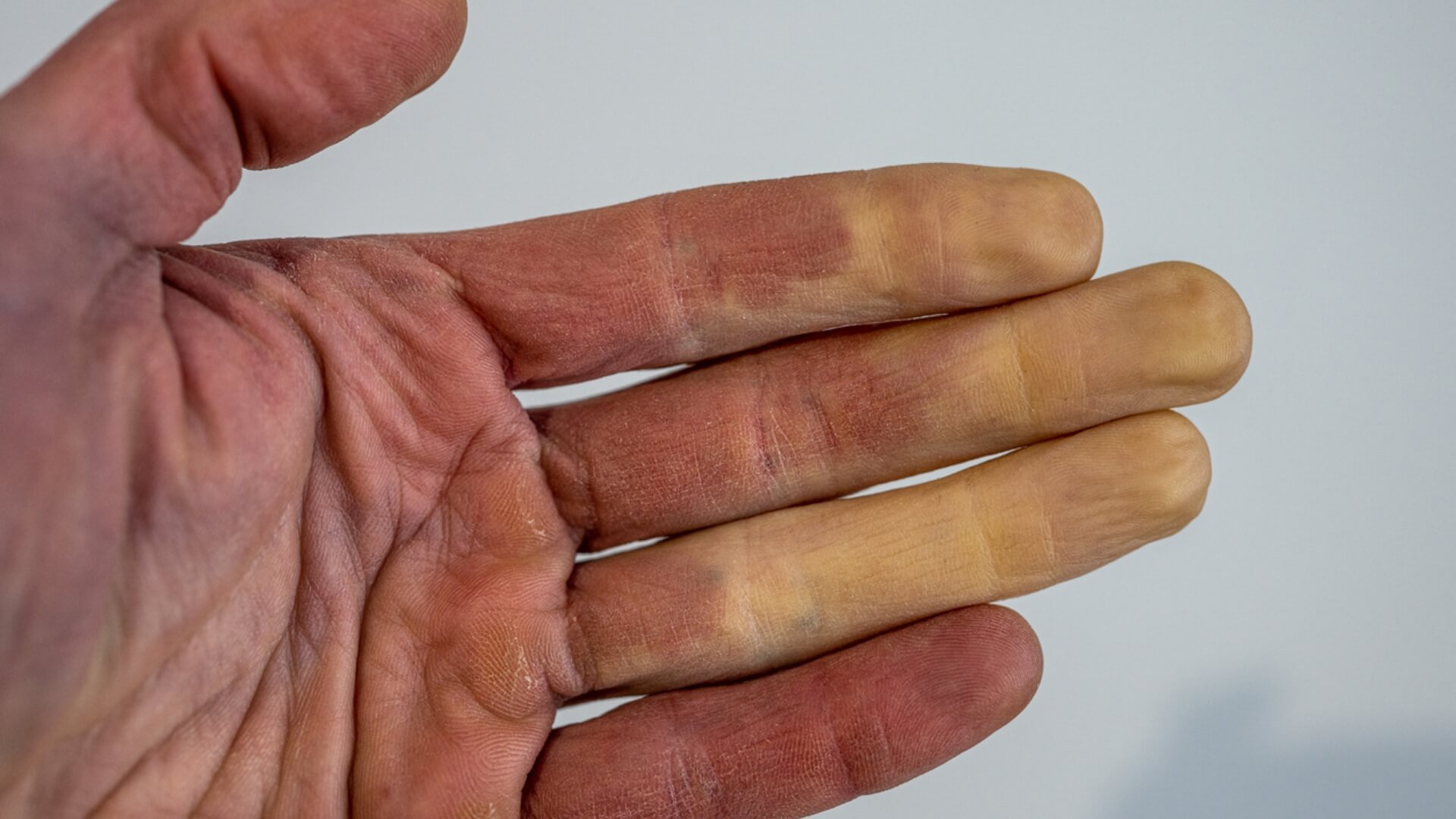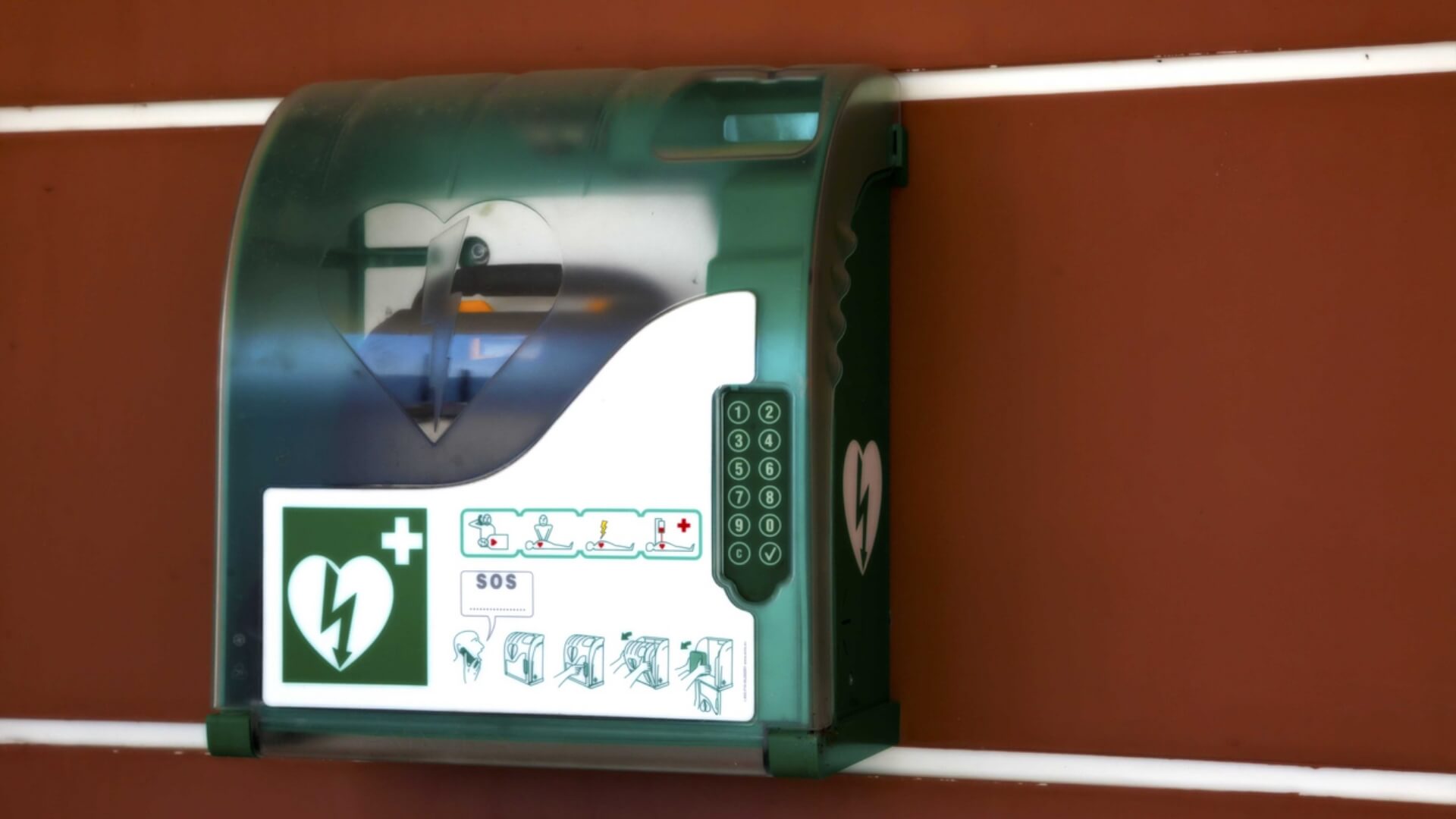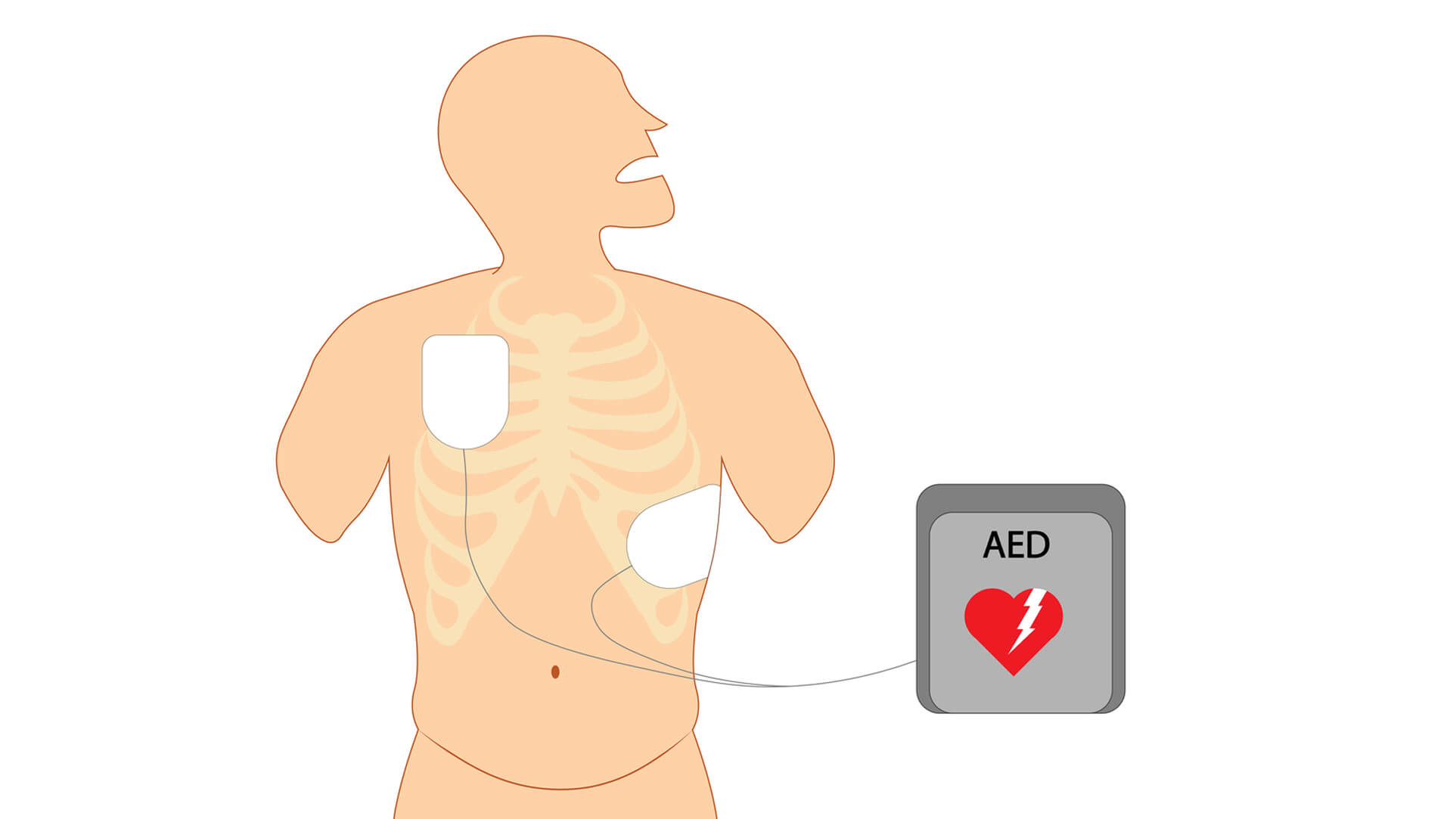-
 Written By
Prabakar Mahalingam
Written By
Prabakar Mahalingam
- Published
Early Warning Signs and Emergency Treatment for Hypothermia

Hypothermia is a serious emergency. It happens when the body loses heat quicker than it can produce it. This causes the core temperature to drop below 95°F (35°C). Hypothermia usually occurs after being in the cold for a long time. It can happen in wet weather or icy water, too. It can affect anyone, but the elderly, infants, and outdoor workers are especially at risk. It’s important to recognize early warning signs. Look for shivering, slurred speech, confusion, and exhaustion. These signs help you get timely and effective care.
Prompt treatment for hypothermia can mean the difference between life and death. First aid must start by warming the person slowly. Remove any wet clothes and shield them from more cold. In severe cases, emergency medical attention is necessary. This guide shows you the key symptoms of hypothermia and the right steps for first aid.
What is hypothermia?
Hypothermia happens when your body gets too cold. This can occur if you stay in a cold place for too long. A drop in temperature affects brain function. It makes thinking clearly and controlling movement harder. In severe cases, it can disturb the heart’s rhythm. This may lead to heart failure or even death.
Hypothermia usually happens in freezing weather. Yet, it can also occur in milder conditions. If someone gets chilled from rain, sweating, or staying in cold water too long, they may be at risk. Even temperatures above 40°F (4°C) can pose a serious risk under these circumstances.
Who is at risk for hypothermia?
Some people are more likely to get hypothermia. This can be due to their age, health issues, or being in cold places:
- Older adults are more at risk for hypothermia. This is especially true for those with health issues like heart disease, thyroid problems, or poor circulation. Certain medications can also impact the body’s temperature control.
- Older people are at risk of hypothermia if they lack proper heating, warm clothes, or enough food. Staying alone in cold homes for a long time can make it tough to stay warm. Poor nutrition adds to the problem.
- Babies and young kids are more likely to get hypothermia. This risk is higher when they sleep in cold rooms.
- People who spend a lot of time outdoors—hikers, hunters, or the homeless—are at a higher risk for hypothermia. This risk comes from being in the cold for too long.
Almost half of older adults with hypothermia don’t survive once it’s found. But even healthy, younger people can be at risk. Long exposure to cold can be dangerous for anyone.
Hypothermia is a serious condition. It occurs when the body loses heat faster than it can produce it. This leads to a dangerously low body temperature. This article explains hypothermia. It covers its stages, warning signs, and first aid treatment. It also shares practical tips for prevention.
Hypothermia has three stages. Each stage connects to a specific drop in body temperature. As the condition worsens, symptoms change. They match how severe the temperature loss is.
- Mild Hypothermia: The body’s core temperature typically ranges from 90 to 95°F (32 to 35°C) during the early stage of hypothermia.
- Moderate Hypothermia: At this stage, the core temperature falls more significantly, usually between 82 and 90°F (28 to 32°C).
- Severe Hypothermia: Severe hypothermia happens when the body’s core temperature falls below 82°F (28°C). This poses a serious risk to health and survival.
Mild Hypothermia
During the initial stage of hypothermia, the core temperature drops slightly to between 90 and 95°F (32 to 35°C). The body is still trying to stay warm, and the person usually remains conscious and aware.
If mild hypothermia isn’t treated promptly, it can worsen quickly. Spotting early signs and acting quickly to warm the person is crucial. This helps avoid a more serious decline.
Signs and Symptoms of Mild Hypothermia:
- Shivering
- Numbness or tingling in the extremities (fingers, toes).
- Cold and pale skin.
- Slurred speech.
- Mild confusion or difficulty with coordination.
- Fatigue or drowsiness.
Moderate Hypothermia
At the moderate stage, core body temperature drops to 82 to 90°F (28 to 32°C). This causes worse symptoms and a clear drop in physical function compared to the mild stage.
Moderate hypothermia requires urgent care, as the condition can quickly worsen. It’s important to warm the person up and get medical help right away. This can help prevent serious problems.
Signs and Symptoms of Moderate Hypothermia:
- Intense shivering
- Increased clumsiness and lack of coordination.
- Difficulty speaking clearly.
- Sluggish thinking and poor decision-making.
- Muscle stiffness and cramping.
- Skin may turn bluish or puffy due to blood vessels constricting.
Severe Hypothermia
Severe hypothermia can be deadly if the core temperature falls below 82°F (28°C). Vital functions are greatly disrupted. This puts the person at immediate risk.
Severe hypothermia is a critical emergency that needs urgent medical attention. Delaying care can lead to heart failure, breathing problems, or death. If someone shows signs of this stage, call emergency services right away. Start basic warming until help arrives. Remember, full rewarming should be done by professionals.
Signs and Symptoms of Severe Hypothermia:
- Shivering may stop, which is a critical sign.
- Profound confusion or disorientation.
- Memory loss.
- Drowsiness and exhaustion.
- Very slow or irregular heart rate.
- Shallow or irregular breathing.
- Loss of consciousness or coma.
- Dilated pupils (large pupils).
- Muscles become rigid and immobile.
First aid treatment for hypothermia.
Giving first aid for hypothermia is crucial. It can prevent the condition from becoming life-threatening. If you think someone is affected, you should act fast. Start warming them and help stabilize their condition.
- Call for Help: If someone has severe hypothermia or is unconscious, call emergency services immediately.
- Move to a Warmer Place: If you can, move the person to a warmer place. If that’s not possible, do your best to protect them from wind and cold.
- Remove Wet Clothing: Wet clothes make you lose heat, so take them off gently. Then, put on dry, warm layers when you can.
- Wrap in Warm Blankets: Wrap the person in blankets, coats, or any warm material. This helps keep body heat and slows cooling.
- Warm the Core First: Warm the chest and abdomen first. Use dry compresses or heat sources, like water bottles, on those areas.
- Insulate the Head and Neck: Since the head and neck lose heat quickly, covering them with a dry cloth or hat can help the person stay warmer.
- Keep the Person Horizontal: If they’re awake, lay them flat to help prevent shock, and raise their legs a little if you can.
- Offer Warm, Non-Alcoholic, Non-Caffeinated Fluids: If they’re awake and can swallow, offer warm, caffeine-free drinks. This will help raise their body temperature gently.
- Do Not Rub Extremities: Do not rub cold limbs, as it can harm already fragile tissues and worsen the condition.
- Monitor Vital Signs: Check their breathing and pulse. If they are unresponsive and have no pulse, begin CPR immediately.
1. Call for Help
Hypothermia can quickly become life-threatening, so urgent medical help is critical. If someone is very cold or unconscious, call emergency services immediately. Only trained experts can give the right care for this dangerous condition.
2. Move to a warmer place.
The next step is to move the person away from the cold as quickly as you can. Move them to a warm, sheltered place, like a heated room or car. This will help stop heat loss and protect them from wind and cold.
3. Remove wet clothing
Wet clothing speeds up heat loss and can make hypothermia more severe. Gently take off damp items like gloves and shoes. They hold cold moisture against your skin and stop your body from warming up.
Once the wet clothes are removed, dress the person in dry, warm layers. Place blankets, extra clothes, or any materials under them. This keeps them off the cold ground and helps conserve body heat.
4. Wrap in warm blankets.
Remove wet clothes, then wrap the person in warm blankets or coats. This helps keep body heat and stops further cooling. Use sleeping bags or extra clothing for warmth. Avoid heating pads, as they can be harmful.
5. Warm the core first.
Warm the person’s core gently. Focus on the chest and abdomen. Use warm compresses or hot water bottles wrapped in cloth. Avoid direct heat to prevent burns. Targeting these areas helps restore internal temperature and stabilize the body.
6. Insulate the head and neck.
The head and neck lose heat faster than other parts of the body, making them important areas to protect. Covering the head with a dry hat or cloth helps reduce this heat loss significantly.
Insulating the neck helps keep warmth in and slows cooling. Small steps like these can really help stabilize body temperature.
7. Keep the person horizontal.
If the person is awake and able to move, have them lie flat to support blood flow to the core. Raising your legs a bit can boost circulation and help warm your body better.
8. Offer warm, non-alcoholic, non-caffeinated fluids.
If the person is alert and can swallow, give them warm drinks. Tea or plain warm water can help raise their body temperature. Make sure the liquid is not too hot to avoid burns.
Don’t give anything with alcohol or caffeine. They can make heat loss worse and cause dehydration. Warm, non-alcoholic fluids support the body’s natural rewarming process safely.
9. Do not rub extremities
Rubbing cold limbs to warm someone with hypothermia is a common myth. In reality, it can cause more harm than good. Cold tissues, especially with frostbite, are fragile and can easily get damaged.
Don’t rub or massage the area. It can make things worse and cause more injury. Gentle care and gradual warming are much safer for recovery.
10. Track vital signs.
Keep a close watch on the person’s breathing and pulse while providing care. If they stop responding and show no pulse, begin CPR immediately if you’re trained. Continuous monitoring helps ensure quick action if their condition worsens.
Even after giving first aid, getting medical help right away is vital. Hypothermia can cause long-term problems. Only professional care can help you recover and avoid more issues.
How to Prevent Hypothermia?
Preventing hypothermia is key, especially in cold areas or when temperatures drop. Taking the right precautions ahead of time can significantly reduce the risk.
- Dress in Layers: Dress in layers to keep warm. Start with a sweat-wicking base. Then add insulation for warmth. Finally, wear a layer that blocks wind and moisture.
- Choose Appropriate Clothing: Choose fabrics like wool, fleece, or synthetics that keep you warm even when damp. Avoid cotton, which loses warmth once it gets wet.
- Wear a Hat: A warm hat that covers your ears helps keep your body temperature stable. Your head loses heat quickly, so it’s important to wear one.
- Protect Extremities: Keep your hands warm with gloves or mittens. Also, protect your feet with insulated socks and waterproof boots.
- Stay Dry: Wet skin and clothes can lead to quick heat loss. So, it’s vital to stay dry with waterproof and breathable outerwear when it’s damp.
- Stay Active: Staying active keeps your body warm. But be careful not to overdo it. Sweating too much can lead to damp clothes, which make you lose heat faster.
- Stay Hydrated and Nourished: Eat warm, energy-rich foods. Drink warm, non-caffeinated, and non-alcoholic fluids. This helps your body stay fueled and keep heat.
- Know the Weather: Check the weather before you head out. Dress for the temperature and be ready for any changes.
- Plan Ahead: Let someone know your plans and when you expect to return before heading into cold areas. Bring key items like extra layers, a thermal blanket, and a phone or radio for emergencies.
- Avoid Overexertion: Too much activity can cause sweating, leaving clothes damp and increasing heat loss. Pace yourself and take breaks to stay dry and warm.
- Take Shelter: Find shelter when needed, as wind greatly speeds up heat loss and makes staying warm much harder.
- Stay Dry When Resting: If you take a break and your clothes are wet, change into something dry to avoid losing more body heat.
- Know the Signs: Watch for signs of hypothermia in yourself and others. Catching it early can help avoid serious problems.
- Use Proper Gear: Dress for winter fun! Wear insulated jackets, snow pants, and warm accessories to stay cozy and safe.
- Alcohol and Tobacco: Limit alcohol and avoid smoking in cold weather, as both can raise the risk of hypothermia.
FAQs
What causes your core temperature to drop?
Core temperature can drop when you’re exposed to cold weather, wet clothes, wind, or cold water for a long time. When the body loses heat faster than it can produce it, this can lead to hypothermia. Damp clothing, strong winds, and being inactive in the cold raise the risk.
How do you cure hypothermia?
To treat hypothermia, first move the person to a warm, sheltered spot. Then, gently take off any wet clothes. Wrap them in dry layers or blankets, and focus on warming the core—especially the chest and abdomen. If they’re alert, offer warm, non-alcoholic fluids. Severe cases need emergency medical help. Professionals must carefully handle rewarming.
What medicine should you give someone if they have hypothermia?
Hypothermia is not typically treated with medication. The priority is physical rewarming and stabilizing vital signs. If a person is in critical condition, doctors may use special treatments at the hospital. Avoid giving any drugs or alcohol, as these can worsen heat loss and impair recovery.
Should you seek medical attention for hypothermia?
Always get medical help if someone has signs of moderate to severe hypothermia. This is especially important if they feel drowsy, confused, or unconscious. After basic first aid, you still need professional care. This helps assess and treat cold exposure effects. It also prevents complications.
What are the first steps in treating hypothermia?
First, move the person out of the cold. Then, remove their wet clothes. Finally, cover them with dry, warm layers. Cover the head and neck. Warm the torso. Don’t rub cold hands or feet. Offer warm fluids if they are awake and able to swallow safely.
Conclusion
Hypothermia is a serious condition. It can be life-threatening. Quick recognition and careful treatment are essential. Cold weather, wet clothes, or long exposure to cold can lower your core temperature. This can happen to anyone. Knowing how to give first aid is important. It helps to understand the signs and take preventive steps. These actions can really make a difference. To treat hypothermia well, you need to be aware and take action. This includes layering your clothes properly and getting medical help when necessary. Always put safety first in cold weather. Be ready to shield yourself and others from hypothermia’s dangers.

